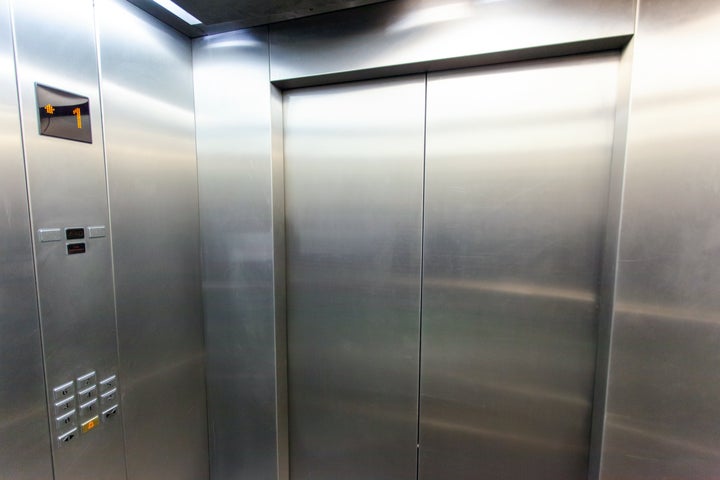When you return to the office, you should commute alone, undergo a daily temperature screening and communicate to your colleagues and visitors through a transparent shield when it’s not possible to stay six feet apart, according to new recommendations released this week by the Centers for Disease Control and Prevention.
The nation’s top public health agency offered detailed technical, engineering and administrative advice for how workers should limit their exposure to the infectious coronavirus disease in enclosed spaces. The goal is to “isolate workers from the hazard,” as the CDC put it.
Say goodbye to water coolers and shared public transportation. Say hello to temperature checks and cloth masks.
The recommendations include:
- Employees should have daily, in-person screenings for their temperature or coronavirus symptoms before they enter the workplace.
- To maintain social distance, employers need to modify furniture and install transparent shields or other physical barriers when social distancing isn’t possible.
- Employers should bid farewell to water coolers, coffee pots, office snack dispensers and other high-touch communal kitchen offerings and replace many snacks with “pre-packaged, single-serving items.”
- Employers should forgo hugs, handshaking and fist bumps.
- Offices need to improve ventilation by increasing the percentage of outdoor air and opening windows if it is possible and safe to do so.
- Employees need to wear cloth masks while doing business.
- Offices need to limit the occupancy of elevators so that people can maintain social distances of at least six feet.
Some of the public health advice is familiar at this point: The CDC recommends office workers wash hands often with soap and water, particularly after a commuting trip.
To better maintain social distancing, the CDC recommends staggering shifts, start times and break times, which is similar to what advocates of flexible, shorter workweeks already have urged employers to arrange.
One of the more radical guidelines pertains to how employees get to the office. The CDC recommends commuting to work alone through single-occupancy rides, and says employers should reimburse employees for transportation costs to incentivize this. If commuting alone is not possible, the agency suggests employers shift work hours so some commutes take place during less busy times.
Erin Sorrell, an assistant research professor in Georgetown University’s department of microbiology and immunology, said the commuting advice can be a challenging recommendation for those who rely on public transportation to get around not just for work, but for errands and groceries. Her advice for using public transportation to get to work is “[maintain] your distance, keep the recommended six feet apart from others, wear your face mask and do not touch your face.”
She added, “If you can walk or ride a bike instead of taking public transit, that would be a good alternative.“
Peter S. Kimmel, publisher of the facilities management resource FMLink, has released his own guide to reopening and occupying buildings safely. Kimmel applauded the aims of the CDC’s new guidelines, but told HuffPost that translating the agency’s recommendations to reality doesn’t reflect real-world situations.
Kimmel offered an example of a company with a 100,000-square-foot space on a floor of a building. “Let’s say you had about 200 workers in there. Now you may be housing 100 workers instead of 200 workers. Where do the other 100 go? Do we leave them at home?” he said. “That company is going to be paying rent as if they were housing 200 workers.”

Kimmel said that the guidelines ignored other facets of office buildings. “You’re dealing with this big physical space that has hard boundaries, and it’s not as easy to just say, ‘I’m going to work from the left side of my desk or the right side,’” he said. “Your work station is physically there and some of them are easier to move than others. Walls are very tough to move.“
He said that following the CDC’s suggestion to limit the number of people on an elevator means “there are going to be lines forming in queues for the elevator.”
He added, “All of this is workable over the short-term, but to make it a long-term solution, it defeats all the design principles that the architectural firms and interior design firms have been using for many years.”
If you find yourself stuck using a more crowded elevator for work, you can still minimize your risk, said Dr. Lucy Wilson, chair of the department of emergency health services at the University of Maryland, Baltimore County. “Fortunately, time spent in an elevator is generally short, which minimizes human exposure, and with the use of masks and distancing, elevator use can be made lower risk for disease transmission,” Wilson said.
Telecommuting is still the safer option.
Of course, one other option to keep workers and visitors safe is to follow what a growing number of companies are doing: keeping workers at home and away from office buildings.
“If you have the option to work from home at this time, it is better to do so,” Sorrell said. “This allows for those who need to come in to access systems or materials to do so with the minimum number of people possible. It also gives employers time to determine how their newly designed workflows are best implemented and can adapt as more people return to the physical space.”
Experts are still learning about the novel coronavirus. The information in this story is what was known or available as of press time, but guidance concerning COVID-19 could change as scientists discover more about the virus. Please check the Centers for Disease Control and Prevention for the most updated recommendations.
A HuffPost Guide To Coronavirus
Credit: Source link